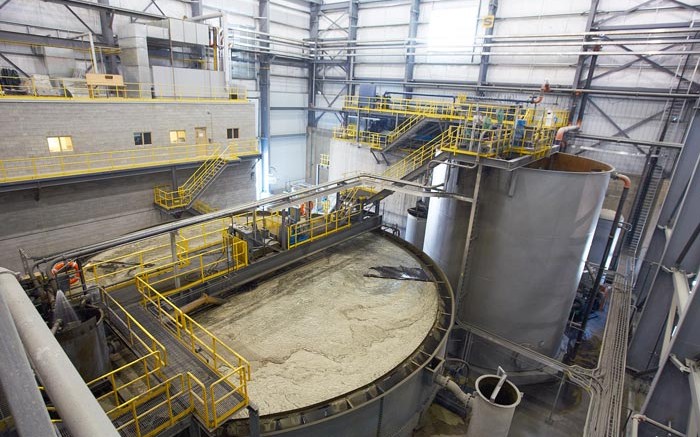The following is a summary of the International Copper Study Group’s (ICSG) December 2014 Copper Bulletin. For more information and to buy the bulletin, visit www.icsg.org.
According to preliminary ICSG data and excluding the adjustment for changes in China’s bonded stocks, after two months of an apparent production surplus — mainly due to weaker use during the summer holiday in Europe, production and use were essentially balanced in September. When making seasonal adjustments for world refined production and usage, however, September showed a production surplus of 61,000 tonnes. The refined copper balance for the first nine months of 2014 indicates a production deficit of 578,000 tonnes (a seasonally adjusted deficit of 459,000 tonnes). This compares with a production deficit of 133,000 tonnes (a seasonally adjusted deficit of 4,000 tonnes) in the same period of 2013.
In the first nine months of 2014, world usage is estimated to have increased by 11%, or 1.7 million tonnes, compared with that in the same period of 2013, supported by strong demand in China and a shortage of high-grade scrap that led to more cathode used by semi-manufacturers. Chinese apparent demand increased by 19% (1.3 million tonnes) based on a 20% increase in net imports of refined copper. Excluding China, world usage increased by 5%, supported mainly by apparent usage growth of 8% in the European Union and 10% in Japan, as well as 7% growth in other Asian countries (excluding China and Japan) and 9% in the Middle East and North Africa. U.S. usage remained flat.
World mine production is estimated to have increased by 2.5% (335 million tonnes) in the first nine months of 2014, compared with mine production in the same period of 2013. Concentrate production increased by 3.5% (268,000 tonnes) while solvent extraction–electrowinning increased by 1.7% (67,000 tonnes). Most of the major copper-mine producing countries had greater output, with the exception of Chile, where production was unchanged; Indonesia (-22%), where production was constrained by the ban on concentrates exports until August; Zambia (-7%), where output was impacted by an operational failure at the Lumwana mine and lower production levels at other producers; and Australia (-3%), where two mines closed temporarily. Production increased by 3% in Peru, 11% in the U.S. (where production in first-half 2013 was impacted by the landslide at the Bingham Canyon mine), 13% in the Democratic Republic of the Congo (DRC), 8% in Mexico, 14% in Canada and 57% in Mongolia. The average world mine capacity use rate for the first nine months of 2014 fell to 83% from 84.7% in the same period of 2013, as the growth in capacity outstripped the increase in production.
World refined production is estimated to have increased by 8% (1.3 million tonnes) in the first nine months of 2014, compared with refined production in the same period of 2013. Primary production increased by 7.5% (including 9% growth in production from concentrates), and secondary production (from scrap) increased by 12%. The main contributor to growth was China (19%, or 910,000 tonnes), followed by India, the DRC, the U.S. and Japan, where aggregated production of the four countries increased by 16% (428,000 tonnes). Output in Chile, the second-leading refined copper producer, declined by 1.2% owing to a 6% decline in electrowon production. On a regional basis, refined production is estimated to have increased in Africa (8%), North America (11%), Asia (13%), Europe (2%) and Oceania (13%), and to have declined in South America (-1.5%). The average world refinery capacity use rate for the first nine months of 2014 increased to 81% from 78% in the same period of 2013.
The average London Metal Exchange (LME) cash price for November 2014 was US$6,701.13 per tonne, down from the October 2014 average of US$6,739.20 per tonne. The 2014 high and low copper prices through the end of November were US$7,439.50 (on Jan. 2) and US$6,434.50 per tonne (on March 20), and the year-to-date average was US$6,901.74 per tonne. As of the end of November, copper stocks held at the major metal exchanges — LME, Commodities Exchange (Comex), Shanghai Futures (SHFE) — totalled 278,671 tonnes, a 227,833 decline from stocks held at the end of December 2013. Compared with October 2014 levels, stocks were up at LME and down at Comex and SHFE.


Be the first to comment on "Chinese driving copper demand: ICSG"